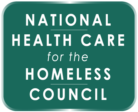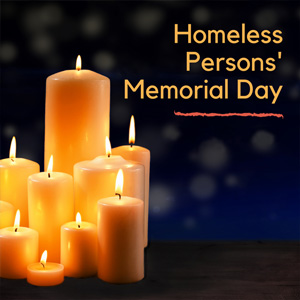Homeless Mortality: The Facts
The experience of homelessness has well-documented long-term consequences on health and well-being. However, due to a lack of national review or standardized data collection for homeless mortality, it is difficult to calculate the extent that homelessness is killing people.
Over the past several decades, many communities have developed their own local reviews of homeless mortality to understand how many people without homes are lost each year, what caused these deaths, and what specific interventions can prevent additional deaths in the future.
The National HCH Council identified 68 cities and counties that recorded the deaths of people experiencing homelessness in 2018. These 68 jurisdictions found at least 5,807 people without homes who passed away that year.
For many reasons, the estimate of 5,800 homeless deaths in 2018 underestimates the total number of homeless deaths that occur in the U.S. each year. First, it represents death counts from only 2% of all U.S. counties. Second, each death count reported by a city or county likely misses many deaths.
A rough estimate of the proportion of PEH who die each year can be determined using data from jurisdictions that conduct both a death count and a homeless “point in time” (PIT) count. Based on the 27 jurisdictions with this data for 2018, a range of mortality between 3% and 8% can be determined (calculated by dividing the mortality count number by the number deemed homeless through the PIT count).
By applying these proportions from 27 cities to the national PIT count (where the PIT report counted nearly 553,000 individuals), it is estimated that between 17,500 and 46,500 homeless deaths occurred in 2018.
In 2019, the Council initiated the Homeless Mortality Data Workgroup to unite expertise on homeless mortality reviews across the county. The workgroup includes a diverse range of experts and researchers charged with sharing best practices on how localities carry out homeless mortality work, discussing how to best organize mortality data reports, and planning advocacy work that can be carried out with, and on behalf of, homeless mortality data.
The workgroup has begun to compile their lessons learned in our Homeless Mortality Toolkit, seen below. This toolkit will share the findings and implications from the communities who conduct homeless mortality reviews, as well as provides guidance on developing or improving a homeless mortality review. Lessons will include how to create partnerships, methods of data collection and analysis, and examples of how communities have used this information to address homeless mortality.
Homeless Mortality Toolkit
Download the Full Toolkit PDF here or click on the individual sections below
An Overview of Homeless Mortality


Developing a Homeless Mortality Review


Developing a Clinical Mortality Review


Literature Review on Homeless Mortality


Homeless Mortality Data Workgroup
Click on the icons below to learn more about us.
More on Homeless Mortality
Click on the images below to learn more.
This publication/procurement is supported by the Health Resources and Services Administration (HRSA) of the U.S. Department of Health and Human Services (HHS) as part of an award totaling $1,625,741 with 0% match from non-governmental sources. The contents are those of the author(s) and do not necessarily represent the official views of, nor an endorsement by, HRSA, HHS, or the U.S. Government. For more information, please visit https://www.hrsa.gov/.







